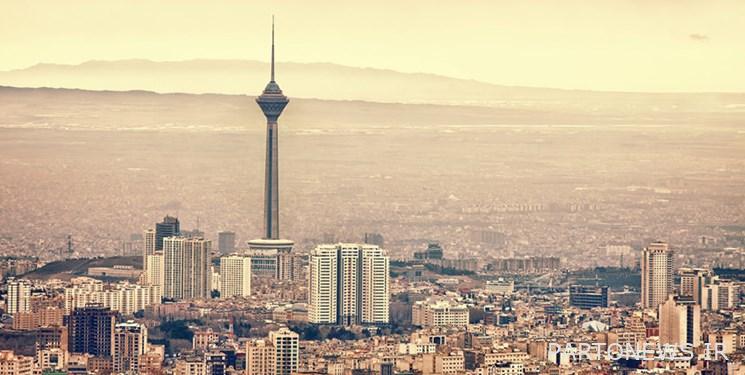Housing problem in Iran; Where are we now and what should be done?

The housing situation in Iran has become critical in such a way that now the share of housing expenses in the portfolio of our urban households is between 60 and 70 percent, while the global average of this index is only 18 percent; According to some international statistics, there are only six other countries that are lower than Iran in terms of access to housing. Therefore, a basic and urgent review of the wrong policies of the past decades is vital. Why have we reached here and what should we do to fix this chaotic situation?
a- According to the results of some researches conducted in Tehran City Planning and Studies Center, the economic efficiency of housing construction in the north of Tehran is not only more than twice that of the south of the city, but even compared to the average of the entire metropolis of Tehran, it is also about twice. For example, in district 1 of Tehran, the average efficiency of construction in 1998 was about 52%, while the economic efficiency of construction activities in the southern regions was much lower and, for example, in district 18, it was only 23% (that is, less than half the efficiency in Region 1). This issue is not specific to Tehran and the same situation prevails in most of the country’s metropolises.
B- In Tehran, during the past decade, about 41% of all building permits were issued only in the five northern areas, i.e., areas 1 to 5, while in the same period, the share of the 12 lower areas of the city, including areas 9 to 20, was only 36.5%. It was from all building permits.
P- The reason for the above is that during the past years, the regulatory system governing the housing market has worked in such a way that the builders are forced to build in areas where the housing price is proportional to the purchasing power of most people and applicants in order to earn acceptable profit. It has no consumption, and this has caused the number of residential units in the north of the city to increase constantly, but a significant part of these units are built only for capital and not for consumption, and for this reason, the number of vacant units in the privileged areas of our metropolises is constantly increasing. it’s increasing; The statistics also show that most of the vacant units are of the type of luxury houses with high square footage, and the distribution of these types of houses is often concentrated in the prosperous areas of metropolises, especially Tehran.
T- But we should know that the main problem of the housing market of the metropolises is not the lack of land, which by granting it and allocating the density, it is possible to provide the basis for the production of affordable housing and respond to the weaker sections of the society. Because researches show that granting excess construction density due to the added value that follows, causes land inflation and further increase in prices. Contrary to the initial impression, the density of sales and the increase in supply during the past decades in the capital, not only did not help to control housing prices, but also had the opposite effect on housing prices (both in the capital and, consequently, in other cities of the country) and on the increase of housing prices. It has fueled
* What should be done now?
It is necessary to correct the existing situation. First of all, it is necessary to distribute the country’s facilities in the territorial area of Iran with a fair approach, because it is obvious that if we concentrate most of the country’s facilities in a few limited metropolitan areas, the country’s population will flow from other places to these limited areas. In that case, the housing crisis will intensify due to the imbalance between housing supply and demand. It is strange that currently the area of all the country’s settlements (including our metropolises, cities and villages) together is only about 1% of the land area of Iran, and even though we have many potential areas for population distribution in the country, we continue to concentrate in the metropolises. Despite all its disadvantages, we continue.
Secondly, the governing bodies should regulate the construction in the areas facing oversupply in such a way that the speculation in the housing market is curbed so that the housing, like many other countries, changes its nature from a capital good to a consumer good. For example, in France, if a house is purchased solely for investment and remains empty, the owner must pay 25% of the rental cost of the same property as tax, or in America, if the house remains empty, the owner must pay 10% annually. to pay the total value of the property as tax. With this type of regulatory policies, now in many developed countries, speculation in the housing market has been curbed. In this regard, we can point to the statistics of empty houses in the two cities of Tehran and London, that the number of empty houses in Tehran, despite having a population almost equal to that of London, is more than ten times that of empty houses in London (London is less than 30 thousand and Tehran is more than 300 thousand empty houses).
Thirdly, the economic and social requirements of legal approvals regarding land development and balanced distribution of population in the country should be provided. We have several approvals in this regard; such as the need to decentralize metropolitan areas, especially in the metropolitan areas of Tehran, Isfahan, Karaj, Mashhad, Rasht, Tabriz, and Shiraz, as well as limiting the growth of mother cities (national land development document, approved by the Supreme Land Development Council, approved on 11/12/ 2019). However, these types of approvals have not made the least progress in the implementation stage due to the failure to fulfill their social and especially economic requirements. Explanation: Currently, around 60 to 70 percent of urban management income in most of our metropolises is provided by unstable revenues such as construction fees, which percentage is visible in less cities and other countries (in many developed countries, this number is less. from 30 percent); But the condition of decongestion of metropolises is to predict stable income for municipalities so that they do not have to sell surplus density to run their cities because as mentioned, this type of density sales and increase in supply, in addition to blowing in the oven of the growth of metropolises, not only It has not helped to control housing prices, but has had the opposite effect.
Some other requirements can also be invoked to correct the existing situation, but if the above three recommendations (i.e. fair distribution of the country’s facilities and capabilities, active regulation of the housing market and also forecasting stable income for city administration) are implemented, then it is possible to implement approvals such as the necessity Decentralization of metropolises and balanced population distribution in the country was promising. The effects of population concentration in metropolitan areas, in addition to causing a housing crisis in the country, have resulted in various consequences such as various social harms, traffic and environmental problems, etc. in metropolitan cities, and all these issues and costs resulting from this The problems have a significant relationship with the amount of density in metropolitan areas. Due to this wrong process, at present, the density of a metropolis like Tehran is about 3 times that of London, 5 times that of Istanbul and many times that of most other cities in the world. be born
A note from Mohammad Manan Raeesi, head of Tehran City Planning and Studies Center
end of message/
You can edit this article
Suggest this article for the first page

